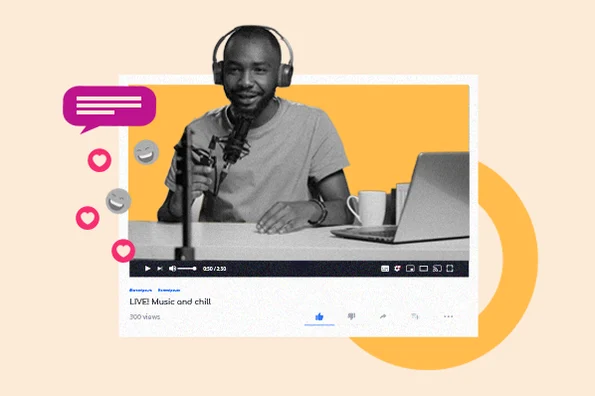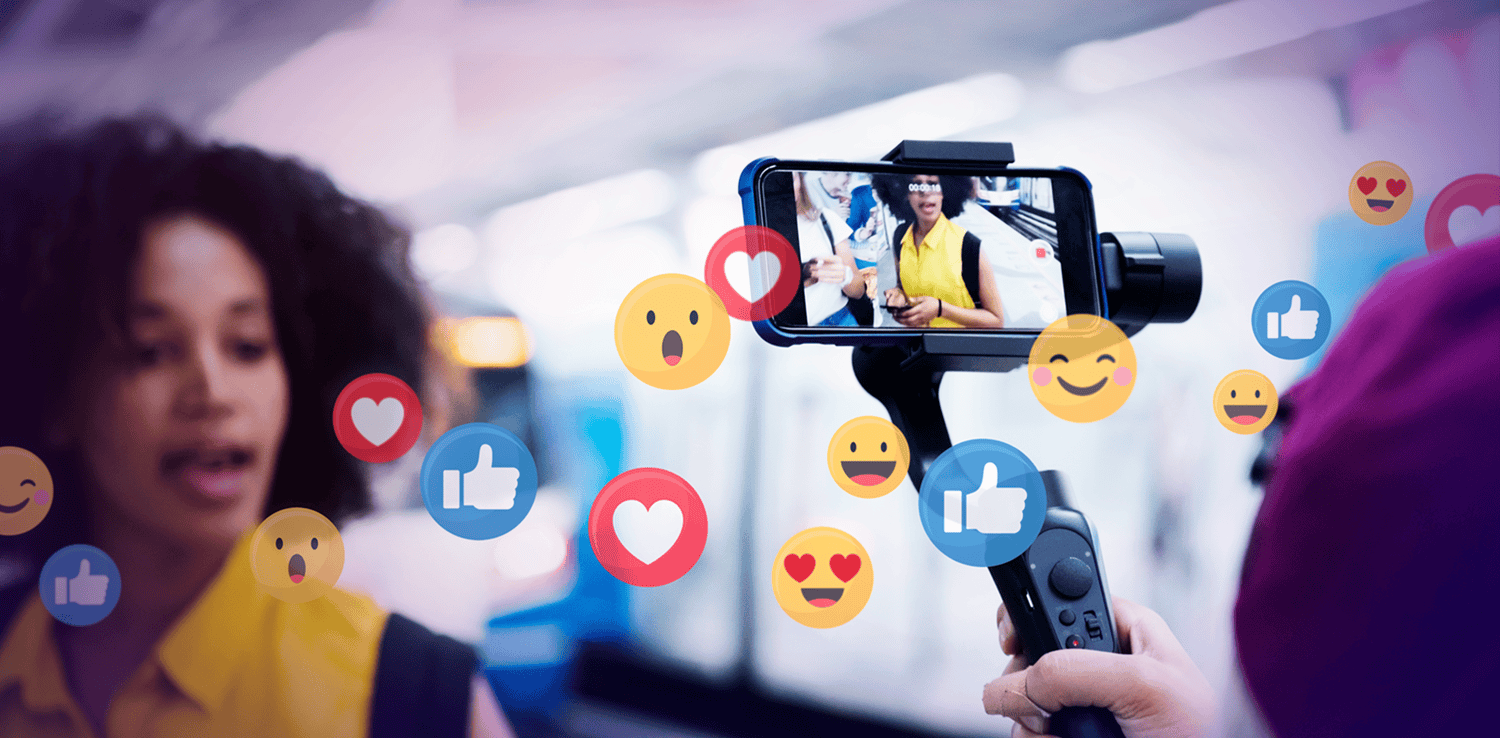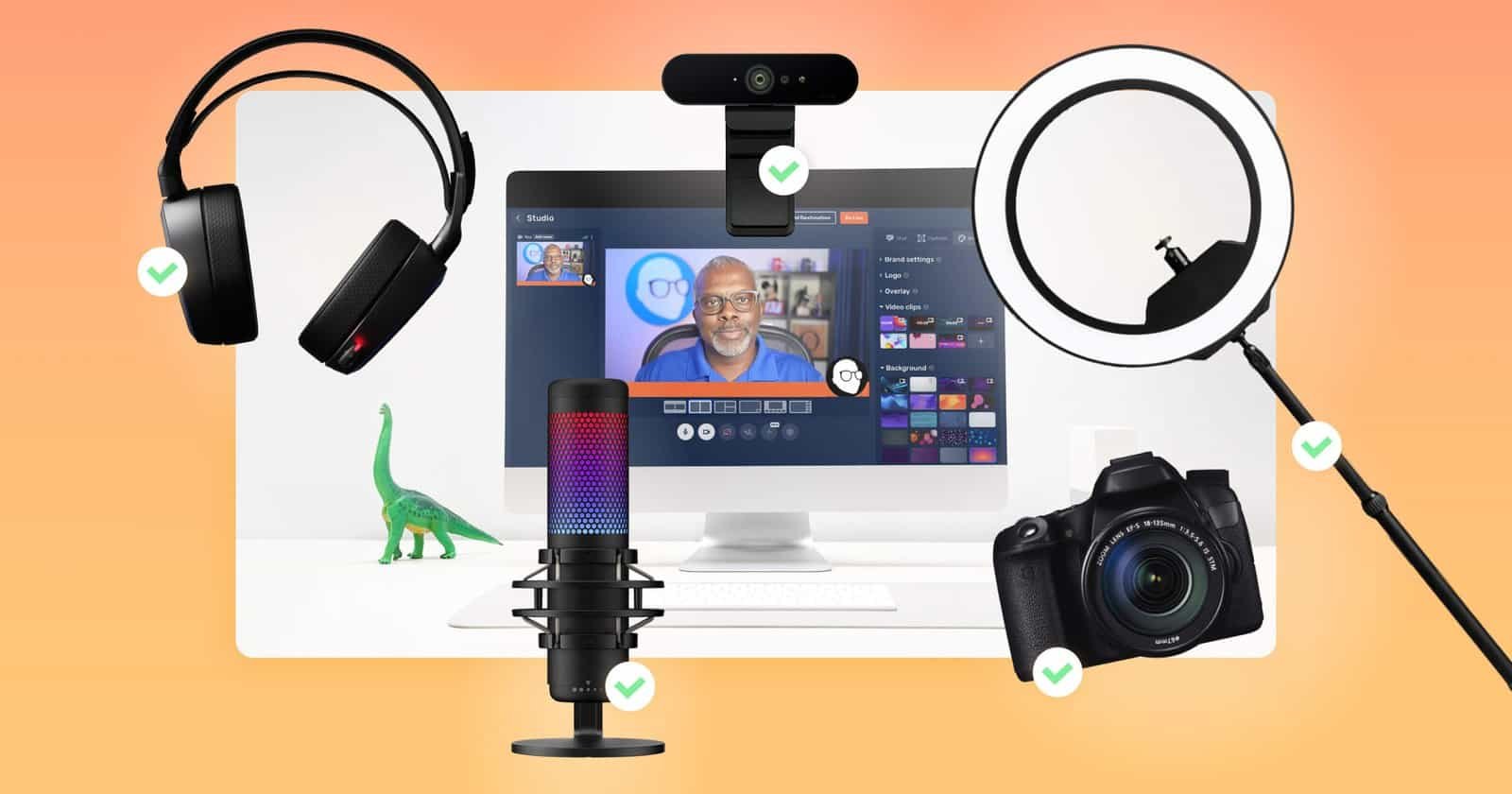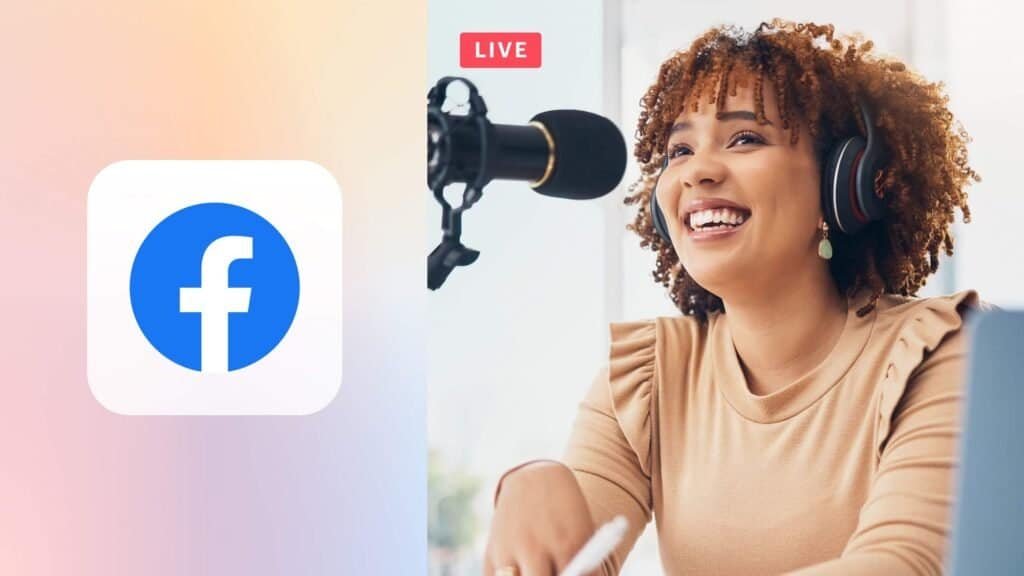Alright, let’s get started with livestreaming Facebook! You know, it’s not just a matter of pushing that ‘Go Live’ button and peeing into the wind. There’s actually a science to creating effective, engaging livestreams that stoke the wildfire of your brand’s visibility and engagement.
Unleash the Power of Pre-Stream Planning
You’ve been told it a thousand times: he who fails to plan, plans to fail. But when it comes to Facebook livestreaming, this could not be more true. Here’s how you should prepare to set yourself up for success before you see the live button:
Craft a Killer Content Strategy That Keeps Viewers Hooked
And Livestream has reported that 80% of an audience would rather watch a live video from a brand than read a blog, but, and it’s a big but, people are pretty savvy, so it’s not just about going live; it’s about sharing value.
To create a content strategy that resonates:
- Identify your audience’s pain points and interests
- Plan a series of livestreams that address these topics
- Create a content calendar to maintain consistency
Furthermore, Facebook’s algorithm prefers live content that users stick around to watch, so think through what will invite interaction and value-packed content that you want the viewer to stay engaged with.
Master the Art of Timing
Timing isn’t everything, but it’s pretty important. According to Sprout Social, which analysed millions of posts, the best times to go live on Facebook are weekdays from 11am-1pm. Except, not really—that’s what worked for them. See if Facebook Insights pinpoints when your followers are most active and time your livestreams accordingly.

Craft a Livestream That Converts Viewers into Loyal Fans
All well and good if you’re looking to make some terrific content. But if you’re aiming for a livestream that captures your occasional onlookers and turns them into true fans, you’re going to be up against a whole different match. Time for the advanced game:
Implement the “Hook, Story, Offer” Method
Facebook Livestreaming moves quickly: within 3 seconds you have to pull somebody in with your ‘Hook, Story, Offer’ to increase engagement by up to 40%, according to the Digital Marketing Institute.
Here’s how it works:
- Hook: Attract attention in the first three seconds (Use something surprising and catchy, such as a surprising statement or interesting question.)
- Story: Keep them watching with a relatable narrative
- Offer: End with a clear call-to-action that provides value
Leverage the Power of Interactive Elements
It seems that interactivity is the secret to successful livestreaming—Facebook says that videos that use features such as polls and QAs get 10 times more comments than normal videos.
To boost interactivity:
- Use Facebook’s built-in polling feature
- Encourage viewers to ask questions in the comments
- Respond to comments in real-time during your stream
Harness the Power of Tech for Pro-Level Streams
You don’t need a movie studio to produce a polished livestream, but the right equipment can make all the difference. Here’s how to take your streaming to the next level:
Create Studio-Quality Streams with Budget-Friendly Gear
A study by video software provider Wyzowl revealed that 67% of viewers agree with the statement: ‘The biggest influence on my decision to watch a livestream is whether it’s of high quality.’ But I have some cheaper news for you—you won’t need to captain the Queen Elizabeth to afford quality gear.
Essential gear for pro-level streams:
- A good-quality external microphone (like the Blue Yeti)
- A ring light for even, flattering lighting
- A stable tripod or phone mount
Leverage Streaming Software for Next-Level Productions
Most beginners utilise Facebook’s native streaming tool, and, while sufficient for getting your bearings, streaming software can give your livestreams a professional polish. Of those professional streamers at Streamlabs, 72% use third-party software.
Popular streaming software options:
OBS Studio (free and open-source)
Streamlabs (great for beginners)
Restream (perfect for multi-platform streaming)

Master the Art of Engagement During Your Stream
And going live is just the beginning. If you want your streams to actually go somewhere, you have to master the fine art of audience interaction. Here are some advanced engagement tips:
Create a “Choose Your Own Adventure” Experience
You need to let the audience participate to keep their attention. An audience that participates generates far more interest than an audience that doesn’t. If you want your Facebook live video to get more reactions, comments, or shares, have your viewers participate. Facebook says users comment 10 times more on Facebook live videos than regular videos and they react 10 times more.
Try this:
- Present your audience with choices and let them vote in real-time
- Adjust your content based on their choices
- Create a sense of co-creation and community
Use the “Callback” Technique for Deeper Connections
Borrowing concepts from stand-up comedy, ‘callbacks’ can help you make some of your audience feel as though they’re in on the joke. When we share experiences together, according to a paper in the Journal of Consumer Research, we become closer.
How to use callbacks:
- Reference previous streams or inside jokes
- Create running themes or characters across streams
- Encourage viewers to become “regulars” for these callbacks
Leverage Data for Continuous Improvement
Will what works on Facebook Livestreaming today work tomorrow? You never know. And this is why it is so important to be able to constantly assess your performances and change your strategy.
Master Facebook Insights for Data-Driven Decisions
Facebook Insights is more powerful than you might think: creators who regularly check their insights and react to their results also see an average 28 percent increase in engagement over time, reports Hootsuite.
Advanced analytics strategies:
- Track your peak live viewership to understand what content resonates
- Analyze your retention rate to see where viewers drop off
- Use the “Top Fans” feature to identify and engage your most loyal viewers
Implement A/B Testing for Continuous Optimization
Unless you happen to work for an email marketing firm, you might not be familiar with a process called A/B testing. A/B testing is similar to a double-blind drug trial, except instead of measuring patients’ blood pressure, you’re testing what combination of things gets people opening emails. A/B testing helps you figure out if one version of a campaign works better than another. Now there’s a version of A/B testing that livestreamers can use to better refine the elements of your streams: introduce another variation of yourself to see if it performs better than the original. We know that humans are instinct-driven and that, as a result, we often make unhealthy decisions.
Advanced A/B testing strategies for livestreams:
- Test different stream lengths to find your sweet spot
- Experiment with various types of hooks to see what grabs attention
- Try different call-to-action styles to see what drives the most engagement

Amplify Your Reach with Cross-Platform Promotion
Your Facebook Livestream is not an island. To make the most of it, promote it across different platforms. Here’s how to make a cross-platform promotion strategy: 1. Write a Tweet teasing your Livestream: ‘I’m about to start a Livestream at 12pm PST. Tune in for the latest news!’ 2. Once your Livestream is live, tweet the video URL: ‘Here’s a link to my Live video. Check it out.’ 3. Like any Tweet, you get only one shot at making a great impression, so it’s worth a retweet.
Create a Pre-Stream Hype Machine
A report for Eventbrite in 2015 states that if a friend is going to an event, 40% more people will attend. The same logic applies to livestreams.
To build pre-stream hype:
- Create teaser content on Instagram Stories
- Use Twitter to share sneak peeks and countdowns
- Leverage your email list to notify subscribers
Repurpose Your Livestream Content for Maximum Impact
Your livestream content is valuable long after the stream has stopped. Vidyard notes that 85% of businesses use video for marketing, and repurposed livestreams can be a goldmine.
Ways to repurpose your livestream:
- Create highlight reels for Instagram Reels or TikTok
- Turn key points into quote graphics for Twitter
- Transcribe your stream and turn it into a blog post
Conclusion
It is a skill that goes beyond pressing ‘live’ and hoping for the best. Facebook Livestreaming is as much about the platform’s features as it is about your audience and analysing the data to refine and improve your strategy over time.
With these more sophisticated tactics—from pre-stream planning to cross-platform promotion—you can create livestreams that not only capture the attention of your fans but also convert your fans into diehards.
Just remember, becoming good at Facebook Livestreaming takes time. A lot of time. It takes creativity, consistency, and most of all, patience. But now you have all these advanced strategies in your arsenal, you’re on your way. You’re going to be just fine.
In conclusion, are you now ready to improve your Facebook Livestreaming skills? Remember the most important thing: you need to implement these strategies from today, track their results and then continue to optimise your strategy. Start streaming your recordings on Facebook right away!
FAQs
How long should my Facebook Livestream be for optimal engagement? What is the ideal length for a Facebook Livestream? This depends on what you are serving, but on the aggregate—and according to Livestream.com, the average viewing time of a live video is 20 minutes. But if your content is good, you can go longer. Some successful streamers go for hours. Ideally, you want to keep your content interesting and valuable for your audience throughout the stream. Start off with 20-30 minute streams, and through analysing your retention data, you should be able to float the length your audiences enjoy.
How often should I go live on Facebook to build a loyal audience? You need consistency in order for people to really build awareness for and follow you on your Facebook Live broadcasts. There’s no universal answer, but many successful streamers go live at least once per week. The Social Media Examiner finds that pages that use live broadcasting saw engagement increase by 67 percent. What matters most is that you build a schedule that works for your audience. Make it a weekly show, every other week, once a day—it really depends on your bearings.
Is it necessary to invest in expensive equipment to create professional-looking livestreams? Yes, if you can afford it, high-end gear can deliver superior-quality livestreams, but you don’t need to go broke buying gear just because you’re livestreaming. In fact, in a survey by Wistia, 67 percent of viewers reported video quality—the image that consumers see—was the most important factor to consider when watching a livestream, but that doesn’t mean you need high-end studio-quality gear. Keep it simple: get a decent external mic, decent lighting (a ring light is a great investment, especially if you’re filming from home), and a robust connection. As your audience grows and you get more comfortable livestreaming, you’ll be able to up your game and start investing in more pro equipment.

